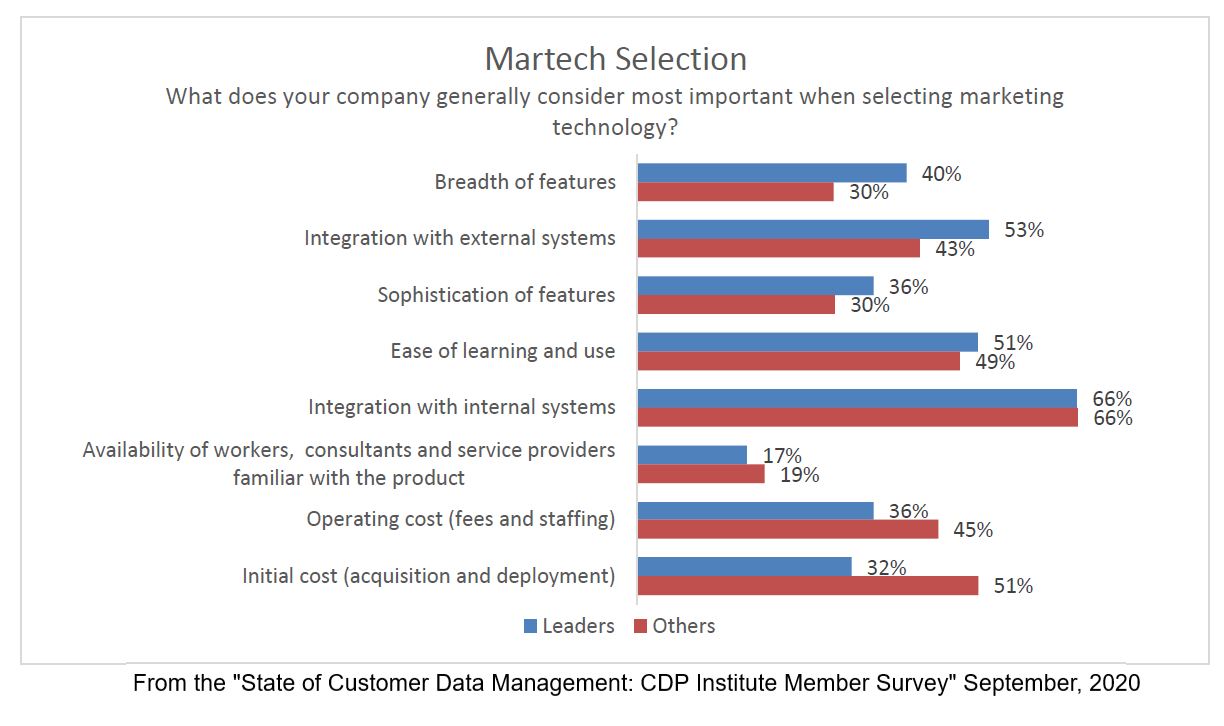If you’re currently trying to decide which marketing technology solution will best fit your needs, knowing how it integrates within your martech stack should be the first thing you consider. In fact, integration is the most important factor when selecting marketing technology platforms, according to Scott Brinker, founder and editor of ChiefMartec.com and a sought after thought leader in the martech space.
“Integration has been the top pain point for marketers for pretty much the entire history of the marketing technology landscape,” writes Brinker in his recent column covering the CDP Institute’s State of Customer Data Management survey, “Marketers love their best-of-breed tools, but they were perpetually frustrated that those tools didn’t get along.”
The CDP Institute, an organization focused on the customer data platform industry, surveyed its members in August of this year to get a wide angle view of their customer systems and martech management practices. According to the CDP Institute’s findings, Brinker says the martech industry has reached an important milestone, with the majority (52%) of survey respondents claiming they have an integrated martech stack comprised of many products from many different vendors.
“In the 2017 report, only 37% of CDP members reported having an integrated, multi-system architecture in place,” writes Brinker, noting that members of an organization devoted to customer data platforms are likely ahead of the curve when it comes to martech best practices, “A few years later, integrated stacks jumped from 37% to 52%. That’s a good sign our industry is making progress.”
The CDP’s survey, which included responses from 669 marketers, found that marketing leaders prioritize integration with internal and external systems over everything else when selecting marketing technology, including ease of use and learning, breadth and sophistication of features and costs. When looking at both groups of survey respondents — the marketing leaders and others — integration still ranked ahead of costs.

The need for integration is especially true when it comes to an enterprise organization’s email marketing stack. There are countless email solutions available, covering a wide array of functions, from delivery, analytics, automation and more. But if an individual solution is unable to integrate with the rest of the email marketing stack, it’s value diminishes quickly.
As an agile email creation platform designed for enterprise organizations, stensul was built to integrate seamlessly with all major email service providers and marketing clouds, including Marketo, HubSpot, Adobe Campaign, Oracle Eloqua, Salesforce Marketing Cloud, Braze, and Iterable. We’ve also built integrations for workflow management tools and digital asset platforms. In fact, Adobe Workfront, a leading workflow management solution, lists stensul among its list of independent software vendor partners.
There are still advancements to be made. The 2020 Global Marketing Report from Workfront found that more than half of its survey respondents — marketers from the U.S., UK, Netherlands, Germany and Sweden — were frustrated with the technology they were using because it was built on unconnected systems that lacked “true integration” capabilities.
“Although marketing organizations use technology vigorously, most haven’t realized the benefits of integrating it,” writes Workfront in its survey of nearly 900 marketing professionals, “On average, marketing teams use eight different tools to manage the various aspects of their work—projects, tasks, requests, communication, design, reviews, approvals, calendars, documents, and more. But not all of these tools play nicely together.”
To adopt a truly agile marketing mindset, you must have agile workflows in place. For email marketing teams and the MOPs organizations that manage their company’s email programs, this means implementing email marketing solutions that not only work together, but flawlessly integrate so that email marketing efforts are focused on strategy versus execution. If an email campaign cannot move through your marketing stack — from concept to delivery — in a seamless manner, then you do not have an agile system in place.
Our research shows that an agile email creation platform, capable of integrating with your ESP and workflow management tools, dramatically reduces the amount of time it takes to create an email campaign — freeing up team resources to focus on higher value work and strategies.
“Whether you’re a leader or aspire to be one, integration is still the #1 criterion,” writes Brinker, “It’s more important than price. It’s more important than operating cost.”




